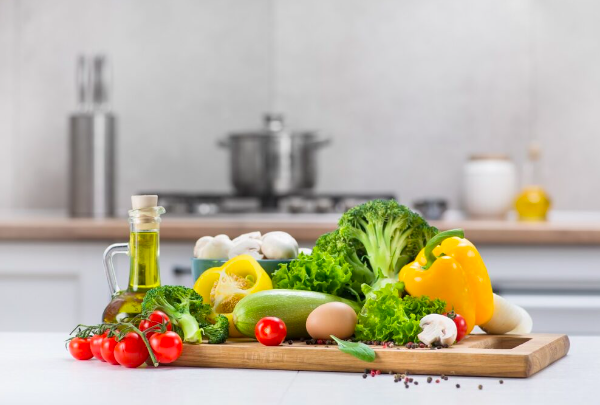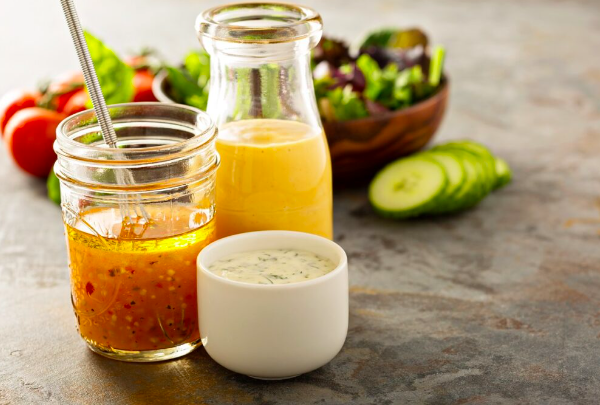Do Vegetables Contribute to Weight Gain?
This was a spontaneous question we posed to Clinical Dietitian-Nutritionist Cleopatra Aresti, who discussed both their nutritional value and the best ways to consume them to benefit from their nutrients while maintaining a healthy weight.

Here’s what she shared with us:
Vegetables are highly valuable for the body. They are rich in vitamins and minerals and are high in fiber and water. The fiber in vegetables improves bowel function, combats constipation, offers cardiovascular protection and is beneficial for maintaining a healthy weight. The fiber in salad, when entering the gastrointestinal tract, mixes with digestive fluids and expands in the stomach. This expansion, or satiety, provides a feeling of fullness more quickly and for a longer period. Even having a large salad each day is enough to supply the body with its essential nutrients. Vegetables also have a high water content that helps keep the body hydrated.
Salads provide essential antioxidants that strengthen the immune system by combating free radicals, which are responsible for various conditions such as cardiovascular diseases, cancer, skin aging, degenerative changes, and other illnesses. Thus, consuming them is particularly important.
The Four Categories of Vegetables by Color:
- Red Vegetables: Tomatoes, for example, contain lycopene, a red pigment that studies have shown protects against several types of cancer, such as prostate, stomach, and lung cancer. Lycopene is a powerful antioxidant that protects cell structures and DNA from the damaging effects of free radicals, which can lead to the development of harmful cells.
- Orange Vegetables: Carrots, pumpkins, and sweet potatoes are rich in cryptoxanthin and beta-carotene, substances that reduce the risk of many physical ailments.
- Green Vegetables: Leafy greens like spinach, lettuce, zucchini, and various greens contain lutein and zeaxanthin, two compounds that reduce the risk of cataracts as we age. They protect the eyes, heart, and other organs. They offer even greater benefits for the heart.
- Purple Vegetables: Beets, eggplants, and purple cabbage contain anthocyanins, substances that inhibit tumor growth and have anti-inflammatory properties, reducing inflammation such as arthritis pain and protecting against heart disease.
Daily Recommended Intake and Tips:
- Variety is Key: It’s crucial to include a variety of vegetables in your diet. Aim for 4-5 servings per day. The less processed they are, the more beneficial they are, as processing can lead to a loss of nutrients. For example, chopping them is also a form of processing.
- Starchy Vegetables: Potatoes, peas, green beans, corn, and sweet potatoes are starchy vegetables, categorized under starches or carbohydrates. Therefore, they should not be consumed in excess. Other vegetables can be eaten in desired quantities, but be mindful of the amount of olive oil used.
- No Vegetable Avoidance: No vegetable should be avoided, but consuming seasonal vegetables is recommended. Raw vegetables are ideal since cooking them can lead to nutrient loss. Pay attention to raw salads, as vegetables exposed to air can oxidize and lose their vitamins. Always wash vegetables with cold water and remove any damaged or excess parts.
How to Wash, Clean, and Cook Vegetables:
- Preserve Nutrients: Leafy parts contain the most nutrients. Many nutrients are also found under the skin of vegetables. Avoid peeling whenever possible, as the skin often contains fiber and minerals.
- Cooking Methods: Boiling is a healthy cooking method, but some key tips can make it even better. Large amounts of water and high temperatures during boiling can lead to significant nutrient loss. The water should be boiling when vegetables are added, and use the minimum amount of water necessary. Cooking time is important; vegetables should be slightly tender. Clean foods thoroughly and cook them with their skins on (e.g., potatoes) to reduce nutrient loss. Avoid cutting vegetables, as cutting can release vitamins and minerals into the water, diminishing their taste. Steaming is the ideal method for cooking vegetables.

Ideas for Tasty Low-Calorie Dressings
By adding a protein source and starch to a salad, it can become a complete meal. However, it’s important to be cautious with store-bought dressings, as they often contain sugar and preservatives. Fortunately, you can easily make your own nutritious dressings with just a few ingredients.
Here are some suggestions:
- Classic Balsamic Dressing:
- 1 tablespoon olive oil
- 1 tablespoon balsamic vinegar
- 1 tablespoon mustard
- ½ tablespoon honey
- 1 tablespoon water
- Salt and pepper to taste
- Light Creamy Dressing:
- 2 tablespoons low-fat yogurt
- 1 tablespoon light mayonnaise
- 1 tablespoon olive oil
- Salt and pepper to taste
- Mustard Lemon Dressing:
- 1 tablespoon mustard
- 1 tablespoon fresh lemon juice
- 1 tablespoon water
- Grated garlic to taste
- Tomato Basil Dressing:
- 1 grated/mashed tomato
- Fresh basil
- Grated garlic
- 1 tablespoon fresh lemon juice
- 1 tablespoon olive oil
- Salt and pepper to taste
- Herb Yogurt Dressing:
- 2 tablespoons yogurt
- 1 tablespoon olive oil
- 1 tablespoon milk
- 1 tablespoon fresh lemon juice
- Chopped parsley, dill, and basil
- Salt and pepper to taste
Another great way to enjoy a satisfying amount of vegetables is by consuming them in the form of soups or using them in recipes such as oven-baked vegetables with cheese and ground meat.
In conclusion, with a bit of creativity, you can create your own favorite salad by adding colors, a variety of vegetables, nutritious foods, and low-calorie dressings, while maintaining your health and protecting your figure.
Cleopatra Aresti is a Clinical Dietitian-Nutritionist, PhD candidate at Harokopio University of Athens, MSc in Sports Nutrition, Harokopio University, Master Practitioner in Eating Disorders & Obesity.
Ask me anything
Explore related questions





